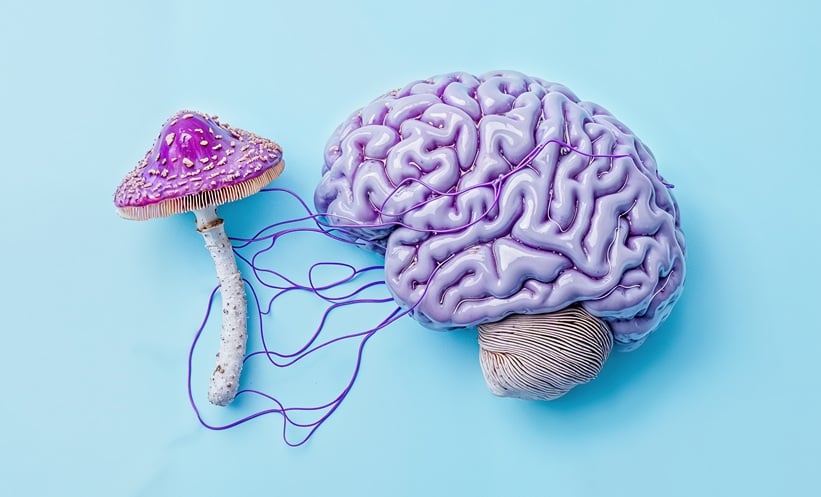Written by Katarzyna (Kate) Rygiel, M.D. | Ph.D. Department of Family Practice, Medical University of Silesia (SUM), Zabrze, Poland
E-mail: [email protected]
![]()
At a time of uncertainty and fear during the COVID-19 pandemic, medical practitioners experience major unexpected changes in the working environment and their own personal lives. In spite of all the adversities, physicians, nurses, and other healthcare professionals across the world make every effort to augment the probability to “flatten the curve” and decrease the morbidity and mortality related to COVID-19. Unfortunately, each day when the clinicians address the urgent medical needs of this pandemic, they face stress caused by an increasing number of patients alongside limited time and resources to fulfill their professional duties and expectations. All these factors create distress, decreased ability to concentrate, and various complaints, as well as the potential for future psychosomatic disorders or diseases.1 To mitigate such negative biopsychosocial effects of stress, different types of nonpharmacological interventions, such as relaxation techniques can be used to alleviate the discomfort and possibly prevent some long-term adverse health-related consequences of stress.2
Simply put, stress is a bi-directional process that consists of the creation of stressors by the environment and the individual’s response to them.3 When there is an imbalance (real or perceived) between demands and resources in which the demands outweigh resources, a person experiences stress.3 It should be highlighted that appraisal is an initial step in the coping mechanism, in which both past experiences and present events influence the way a person reacts to a situation.4 Also, it is important to point out that the biopsychological stress reaction takes place after a certain meaning/memory has been attached to the current situation, evoking an emotional response.5 As a consequence, cognitive or emotional appraisal influences how a person will cope with a given event.
According to a current model of stress, the primary appraisal of a stressful situation relates to the initial perception of the stressor (e.g., negative, positive, or neutral), and the secondary appraisal refers to the coping strategies and resources (e.g., how to overcome or adapt to the stressors).3-5 At this point, an individual’s coping approach can be positive (e.g., approaching a stressor as a challenge) or negative (e.g., viewing a stressor as a threat, which is often associated with anxiety, anger, fear, frustration, or sadness).4,5 In addition, repeated negative appraisals may lead to maladaptive behaviours and adverse health consequences.5,6 Therefore, it appears that modifying the perception of stressors can help individuals particularly exposed on stressful situations, such as medical practitioners, enhance their coping skills, clinical performance, and personal health status.4,7 For instance, assessing stressful work-related events as being challenging rather than as being threatening can favourably alter the stress physiology, so that certain stressors could be perceived as motivators to overcome the most difficult obstacles.5,7 In essence, ‘positive coping’ with stress relates to the way an individual is able to achieve the balance between various work/life demands. While daily stress is a natural part of everybody’s life, extreme or chronic stress can impair capability to work and deteriorate health. Therefore, there is a necessity to implement feasible, effective, safe, and inexpensive stress-management interventions in the healthcare setting.8,9
For medical staff members at the time of stress caused by the COVID-19 pandemic, using problem-focussed coping strategies that consist of defining problems, generating/delivering solutions, and evaluating results, complemented by some simple relaxation techniques, seems appropriate. For instance, mindfulness is a cognitive/behavioural practice focussed on observing the external or internal environment without judgment. This strategy allows the mind to be focussed on the moment-to-moment experience of the internal (e.g., thoughts, emotions, and sensations) and external (e.g., situations) events.2,9,10 As a result, individuals who focus their attention on the present moment and become fully aware (mindful) of their cognitive and emotional processes are able to create a calm, relaxed, and balanced psychophysical condition, despite external demands, pressures, or even crises.2,9,10 Studies have revealed that many people who have been practising mindfulness even for a short time have decreased their perceived stress levels, and this has translated into improved work performance, immune system function, and health condition.2,11,12
Of course, the present hectic atmosphere and busy schedules are inconvenient for learning relaxation techniques in the form of courses. However, one of the most important components of the relaxation method, the deep diaphragmatic breathing (DDB) technique, has also been separately studied as a stress-reduction modality, and convincing evidence exists that DDB is very useful for stress management.13,14 A recent study has demonstrated a beneficial influence of DDB on mental functions and normalisation of stress-induced cortisol levels.14 This indicates that such a simple technique has remarkable implications for the promotion of mental hygiene and the prevention of many adverse health-related consequences of stress.14 DDB includes controlled abdominal breathing that enables the individual to enter a relaxed state in an effortless manner.14 Moreover, DDB can be practised anywhere, at any time (e.g., for brief moments), and without any special equipment, since breathing is a physiological function. It should be emphasised that intentionality and self-discipline are crucial for effective DDB practice. For instance, purposefully performing DDB during breaks at work or even some daily routines (e.g., hand-washing, putting on or taking off protective mask, gloves, or googles) can promote calming effects. Although DDB has not been formally studied during the viral pandemic, it is conceivable that it can bring psycho-physical benefits without causing harm. In fact, medical practitioners have also been obligated to look after themselves, so that they can take good care of their patients. Simultaneously, they should model their personal behaviour to their patients, families, and coworkers. Hopefully, DDB could help them accomplish these goals.
During the COVID-19 pandemic, offering healthcare workers some basic support (such as necessary rest, adequate nutrition, and assistance with personal needs), as well as providing clear communication channels, concise protocols, and adequate medical equipment/facilities, should lead to enhanced professional efficiency and an increased sense of control over the situation.15 In addition, it is essential to increase the clinicians’ resilience to surrounding stressors via positive modification of coping skills. It appears that DDB, a ‘portable intervention’ that has been shown to be helpful for the reduction of the perceived stress levels, merits consideration. For healthcare professionals, who are interested in the applying of DDB into their personal stress reduction portfolio, some practical tips to decrease the negative effects of stress reactions by teaching the body DDB (depending on the individual context) are presented below.2,7,13,14
Deep Diaphragmatic Breathing: Helpful Hints and Concrete Steps
DDB is a technique that effectively slows down the breathing rate, serving as an ‘internal calming tool’.
- Remember that DDB should take the edge off feelings of distress/anxiety, but not completely avoid/eliminate such feelings
- Learn to practise DDB while feeling relatively calm, and then, when you are comfortable with DDB, start using it in situations that cause distress/anxiety
- It may be helpful to first try DDB when lying down, with one hand on the chest, and the other hand over the abdomen (watching how the hand over the abdomen rises, as the lungs are filled with air)
DDB concrete steps:
Position: sitting (or standing) upright
1. Inhale slowly through the nose (observing how your abdomen is expanding) for 4 seconds
2. Hold your breath for 1-2 seconds
3. Exhale slowly through the mouth for 6 seconds
4. Pause for 1-2 seconds before taking your next breath
Try to do about six breathing cycles per minute (or you may find your own comfort range). Perform DDB for at least 5 minutes 1–2 x/day
Regular practise of DDB could bring psychophysical benefits since you will learn to ‘reset’ your respiratory rate and alleviate feelings of distress/anxiety.
References
1. McEwen BS. Brain on stress: how the social environment gets under the skin. Proc Natl Acad Sci USA. 2012;109 Suppl 2:17180-5.
2. Kabat-Zinn J. Full catastrophe living: using the wisdom of your body and mind to face stress, pain and illness. Bantam: New York, 2005.
3. Tonhajzerova I, Mestanik M. New perspectives in the model of stress response. Physiol Res. 2017;66(Supplement 2):S173-85.
4. Oken BS et al. A systems approach to stress, stressors and resilience in humans. Behav Brain Res. 2015;282:144-54.
5. Karatsoreos IN, McEwen BS. Psychobiological allostasis: resistance, resilience and vulnerability. Trends Cogn Sci. 2011;15(12):576-84.
6. Glaser R, Kiecolt-Glaser JK. Stress-induced immune dysfunction: implications for health. Nat Rev Immunol. 2005;5(3):243-51.
7. Prasad K et al. Effect of a single-session meditation training to reduce stress and improve quality of life among health care professionals: a “dose-ranging” feasibility study. Altern Ther Health Med. 2011;17(3):46-9.
8. Marine A et al. Preventing occupational stress in healthcare workers. Cochrane Database of Systematic Reviews 2006, Issue 4. Art. No.: CD002892.
9. Schenstrom A et al. Mindfulness-based cognitive attitude training for primary care staff: a pilot study. Complementary Health Practice Review. 2006;11(3):144-52.
10. Shapiro SL et al. Effects of mindfulness-based stress reduction on medical and premedical students. J Behav Med. 1998;21(6):581-99.
11. Davidson RJ et al. Alterations in brain and immune function produced by mindfulness meditation. Psychosom Med. 2003;65(4):564-70.
12. Lane JD et al. Brief mediation training can improve perceived stress and negative mood. Altern Ther Health Med. 2007;13(1):38-44.
13. Perciavalle V et al. The role of deep breathing on stress. Neurol Sci. 2017;38(3):451-8.
14. Ma X et al. The effect of diaphragmatic breathing on attention, negative affect and stress in healthy adults. Front Psychol. 2017;8:874.
15. Adams JG, Walls RM. Supporting the health care workforce during the COVID-19 global epidemic. JAMA. 2020. doi:10.1001/jama.2020.3972. [Epub ahead of print]








